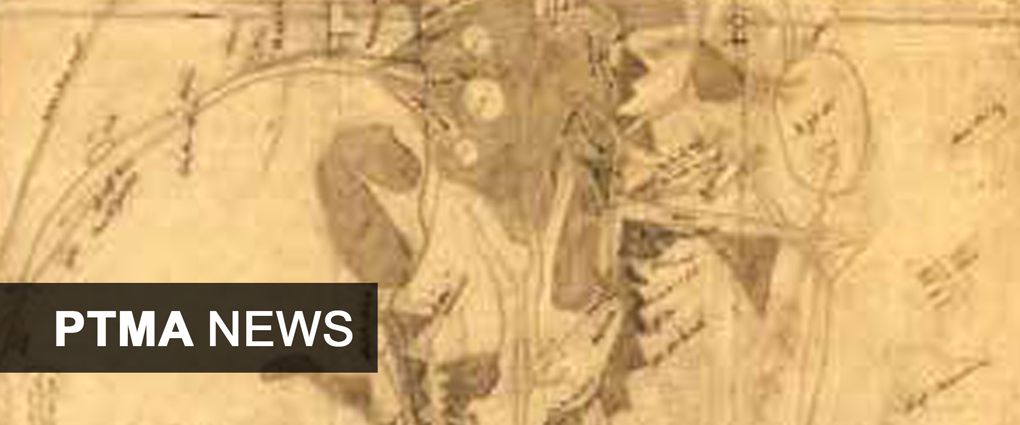
Fall museum association conferences
September and October were busy months for provincial and territorial museums associations, many of which offered interesting learning and networking opportunities. With many carrying out their fall conferences, we thought we would have a look at some of the themes that emerged and thoughts that were presented to museums across the country. Most conferences tackled three main and interrelated issues: Indigenous topics and reconciliation, humanity and wellness, and building networks and communities, especially in support of economic capacity.
Most of the conferences featured keynotes and sessions on reconciliation and Indigenous issues. The British Columbia Museums Association and the Yukon Historical & Museums Association both featured themes that centered on Indigenous topics.
Spoken Words, Shared Stories, the BCMA’s conference theme, acknowledged the importance of the International Year of Indigenous Languages and explored how museums can become involved in language revitalization. Keynotes from Dr. Lorna Wanosts’a7 Williams and Josh Seymour were livestreamed on social media and were received as especially effective by attendees. Josh Seymour spoke as a representative of the Lheidli T’enneh, on whose traditional territory the conference took place.
In the Yukon, Our Trails Bring Us Together, also focused on language, even translating the theme into 5 Indigenous languages as well as French and English. Centered around the 150th anniversary of the Kohklux Map, drawn Chilkat Łingit leader Kohklux and his wives in 1869 for American scientist George Davidson. It is the oldest preserved map of this region drawn on paper by Indigenous people and includes place names in multiple Indigenous languages. A potlatch celebration in honour of the map was conducted shortly before the conference began by the Champagne and Aishihik First Nations.
For associations in the centre and east of Canada, community support was defined more broadly, with an insightful focus on the work of museums as part of the human experience.
The Société des musées de Quebec’s conference theme, L’humain au centre des actions muséales, discussed how museums draw inspiration from the principles of socially engaged museology, notably including putting the audience at the heart of their activities and addressing contemporary social issues. The conference also explored various questions: for example, do these principles lead to museums fully and actively fulfilling their social role? How do you measure the real impact of museums on individuals and society? How can museums make a greater contribution to economic development, the well-being of individuals and communities, and a sustainable future?
In Manitoba, the Association of Manitoba Museums conference theme was Where Do We Go From Here? Delegates were invited to explore the future and how museums can get there and remain a relevant and vibrant part of their communities. One of the highlights was Jo Bunka and Loretta Dyck’s presentation when they suggested “looking at our past footprints to see how we might step forward.”
The Alberta Museums Association conference theme, As a Whole: Well-being, Health, and Museums, explored how museums support the health and well-being of individuals, institutions, and communities and showcased the related impact of cultural experiences in museums. Best practices were modelled and shared with delegates and guests beyond the cultural sector to those working in health, social services, and community well-being. An opening keynote by Dr. Carol Ryff explored the importance of museums as spaces that foster well-being by promoting autonomy, personal growth, and purpose in life. A closing keynote by Prof. Helen Chatterjee examined the value of museum participation for psychological and physical health, and how social prescribing can link isolated and vulnerable individuals to museum programs as sources of support in their communities.
The Association of Nova Scotia Museums centred their conference on resource development in museums, to grow a sense of community but also in an economic sense. Mining Your Museum: Making Every Nugget Count focused on building capacity within the museum sector to maximize overall impact by obtaining, retaining, and continually improving upon the resources available. A special feature was development of experiential tourism programing with community partners.
In St. John’s, the Museum Association of Newfoundland and Labrador committed to a focused theme. Tied to the economically important sector of tourism, Heritage Tourism: Experience Museums, included case studies, presentations and lectures on tourism statistics, marketing and product development. The provincial Minister of Tourism, Culture, Industry and Innovation, Mr. Bernard Davis, was also in attendance to present family with a posthumous Award of Merit, in honour of community and museum champion, Larry Dohey.
In New Brunswick and Ontario, conference themes resulted in something for everyone.
Strides and Travels in New Brunswick featured a wide variety of sessions including one on the intersection between the heritage sector and the rejuvenation of municipalities. Also, under the umbrella of best practices, a session on energy efficiency, and the sustainability of old buildings spoke to the growing focus on the environmental, economic and social responsibilities of being green within heritage sites.
The Ontario Museum Association’s 2019 Annual Conference, Net[works] Benefit, brought together more than 350 delegates from across the sector in Brantford and strengthened connections in the province’s museum network. Keynote speakers included Alberto Garlandini, Vice President of the International Council of Museums (ICOM); Thanh Sinden from the U.K.’s Museum Detox; and Rick Hill, knowledge keeper and renowned Indigenous curator. Sessions covered topics like Indigenous reconciliation, the importance of Black museology for the interpretation of Ontario’s diverse history, and the demands and opportunities emerging museum professionals.
Upcoming…
The Museums Association of Saskatchewan did not hold a fall conference as theirs is earlier in the year. Their 2020 conference in early June, Stuff to Stories 2.0, will question the role of storytelling in creating more inclusive museums, how stories can create significance and meaning in collections and bring objects to life and the importance of physical artifacts and collections in an increasingly digital world.